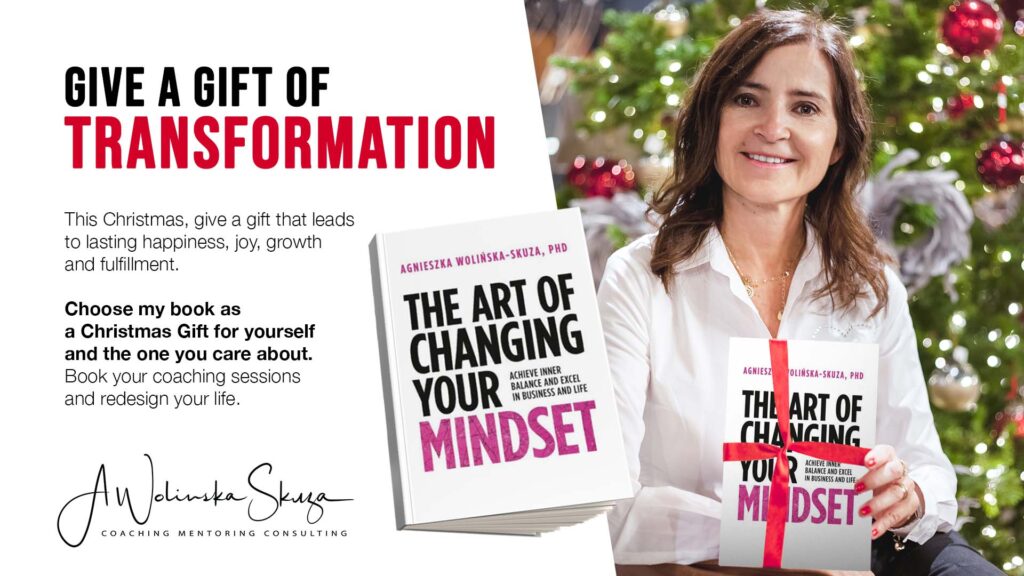Mastering the Art of a Healthy Mindset: Leadership Lesson for Wellbeing.
In today’s fast-paced world, maintaining a healthy mindset has become more important than ever, particularly for leaders who must juggle multiple responsibilities and make difficult decisions. Fortunately, art can offer valuable insights into mastering the art of a healthy mindset, which can help leaders achieve greater wellbeing, productivity, and success.
One of the key lessons that leaders can learn from the art world is the importance of perspective. Just as artists use different perspectives to create unique and powerful works of art, leaders can use different perspectives to gain a deeper understanding of their challenges and opportunities. By embracing diverse viewpoints and seeking out new perspectives, leaders can develop a more nuanced and comprehensive understanding of their organizations and the world around them. Another valuable lesson that art can teach leaders is the importance of creativity. Creativity is often associated with art, but it is also a crucial trait for effective leadership. By embracing creativity, leaders can break out of old habits and find new solutions to problems, which can lead to greater innovation, growth, and success. Art can broaden our horizons and inspire us to think outside the box.
Art can also teach leaders the value of patience and persistence. Creating a work of art is often a slow and laborious process that requires patience, persistence, and attention to detail. Similarly, mastering a healthy mindset and achieving wellbeing requires time, effort, and a commitment to continuous improvement. By embracing these values and taking a long-term perspective, leaders can develop the resilience and persistence they need to succeed. Ultimately, mastering the art of a healthy mindset is not just about achieving personal success. It is also about creating a culture of wellbeing and positivity that can benefit the entire organization. By setting an example of resilience, creativity, and positive thinking, leaders can inspire their teams to achieve greater success and enjoy greater wellbeing, both on and off the job. Art can offer powerful insights into mastering the art of a healthy mindset, which is crucial for effective leadership and personal wellbeing. By embracing diverse perspectives, creativity, patience, and persistence, leaders can develop the resilience, innovation, and positivity they need to succeed in today’s challenging world.
How can leaders incorporate artistic expression into their workplaces to improve overall employee well-being?
In my book, The Art of Changing Your Mindset, I dedicate a chapter to boosting creativity. I firmly believe that creativity is a crucial skill for executives to cultivate. In order to stay ahead of the competition, companies must be able to innovate and think outside the box. By engaging in artistic activities, executives can train their minds to be more flexible and adaptable, allowing them to approach problems from a new perspective and come up with fresh solutions.
In chapter 3 of The Art of Changing Your Mindset, I explore the importance of boosting your creativity to enhance your personal and professional life. Through a series of exercises and techniques, I guide readers on a journey towards unlocking their inner creativity and finding new and innovative solutions to life’s challenges. One of the key takeaways from this chapter is the importance of shifting our mindset from a fixed mindset to a growth mindset. A fixed mindset is the belief that our abilities and intelligence are predetermined and unchangeable, while a growth mindset is the belief that our abilities can be developed and improved over time. By adopting a growth mindset, we can be more open to new ideas and perspectives, which can help to spark creativity and innovation.
Here are some more examples of how art and creativity can positively impact executives:
- Boosting innovation: Engaging in creative activities can help executives tap into their imagination and come up with new and innovative ideas. This can lead to better problem-solving skills, more efficient workflows, and new product or service offerings.
- Reducing stress: High levels of stress can negatively impact an executive’s decision-making abilities, productivity, and overall well-being. Taking time to engage in creative activities such as painting or drawing can help reduce stress levels and improve mental clarity.
- Improving teamwork: Collaborative creative activities such as brainstorming sessions or team-building exercises can improve communication and teamwork skills among executives and their teams. This can lead to better project outcomes and a more positive work environment.
- Enhancing leadership skills: Creativity is an essential skill for effective leadership. Executives who regularly engage in creative activities can develop better communication skills, become more open-minded, and foster an environment of innovation within their teams.
- Enhancing emotional intelligence: Creative activities can help executives develop better emotional intelligence by providing a safe space to express and process emotions. This can lead to improved relationships with team members, better conflict resolution skills, and a more empathetic leadership style.
As an executive, taking care of your mental well-being is essential for both personal and professional success. Incorporating art and creativity into your life can have a significant positive impact on your mental health and may even lead to new and innovative solutions to the challenges you face in your role. As leaders, it is essential to recognize the importance of art and creativity in promoting a positive mindset and improving mental health. Encouraging employees to engage in creative activities and providing opportunities for artistic expression can improve job satisfaction, increase productivity, and promote overall well-being.
Moreover, engaging in artistic activities can help executives develop a growth mindset. The act of creating art requires experimentation, making mistakes, and learning from them. This process can help executives become more resilient and open to new experiences, which can be incredibly valuable in a constantly evolving business landscape.
So, why not give it a try and see what benefits it can bring to your leadership and your company?
Here are some questions to consider as an executive looking to boost their creativity and mental well-being:
- How can I incorporate creative activities into my busy schedule?
- What benefits can I expect to see from engaging in art or other creative pursuits?
- How can I encourage my team to engage in creative activities and boost their mental well-being?
- What techniques can I use to overcome creative blocks and tap into my inner creativity?
- How can I use creativity to approach challenges in my professional life in new and innovative ways?
What role does creativity play in promoting mental health and resilience?
Art can serve as a powerful tool for improving our mindset and overall well-being. Whether it be creating art or experiencing it, the therapeutic benefits of art are endless. So, why not explore your creative side and see how art can help you achieve a positive mindset?
Art has been known to have a significant impact on our well-being, providing various therapeutic benefits that help in boosting our mood, relieving stress, and even improving memory. The power of art is not limited to its aesthetics but extends to the mental and emotional benefits it offers. The creative process of making art can help individuals to express their emotions, thoughts, and ideas. It serves as a healthy outlet for negative emotions, reducing stress and anxiety levels. Moreover, the process of creating art allows individuals to enter a state of flow, where they lose track of time and immerse themselves in the present moment, providing a sense of relaxation and tranquility. Art also helps leaders to develop a positive mindset. The act of creating something from scratch, no matter how small or big, can boost self-esteem and confidence. Artistic expression allows individuals to explore their creativity and push themselves to their limits, providing a sense of accomplishment and satisfaction. Experiencing art can also have a positive impact on one’s mindset. Engaging with different art forms, whether it be through visiting a museum, attending a concert, or watching a play, can provide an opportunity for individuals to experience new perspectives, ideas, and emotions.
How art and artists have been involved in promoting positive mindset and mental health?
Many museums around the world offer programs related to art and mental health. Here are a few examples:
- The Frida Kahlo Museum in Mexico City offers art therapy sessions to visitors to help alleviate stress and promote emotional well-being.
- Tate has a program called “Art and Wellbeing” which includes art therapy sessions, mindfulness workshops, and creative writing courses. They also have a program called “Tate Exchange” which brings together artists, academics, and members of the public to explore social issues and wellbeing through art.
- Guggenheim has a program called “Artful Healing” which includes art therapy sessions, mindfulness meditation classes, and art-making workshops. They also offer guided tours for individuals with dementia and their caregivers to engage with art in a supportive and stimulating environment. Additionally, Guggenheim has collaborated with mental health organizations to bring attention to mental health through art exhibitions and events.
- The Museum of Modern Art (MoMA) in New York City offers a program called “Artful Practices for Well-Being,” which includes guided meditation sessions and discussions about how art can promote mental health and well-being.
- The Van Gogh Museum in Amsterdam offers “Art and Wellness” workshops, which combine mindfulness practices with viewing and creating art inspired by Vincent van Gogh’s work. They also offer workshops for individuals with autism spectrum disorder.
- The British Museum in London offers “Mindful Museum” sessions, which are mindfulness meditation sessions held in the museum’s galleries. They also offer programs for individuals with dementia, as well as workshops and courses on mindfulness and creativity.
- The National Gallery of Australia in Canberra offers “Art and Dementia” programs, which include guided tours and art-making workshops for individuals with dementia and their caregivers.
- The Art Gallery of Ontario in Toronto offers “Art and Wellness” programs, which include mindfulness meditation sessions and art-making workshops for individuals with mental illness.
- The Musée d’Orsay offers art therapy sessions for people with mental health issues, including anxiety, depression, and bipolar disorder. The program is run by a certified art therapist and includes both individual and group sessions.
- The Fundació Joan Miró in Barcelona, offers art therapy workshops for people with mental health issues, including anxiety, depression, and addiction. The workshops are led by a team of psychologists and art therapists and are designed to help participants develop their creativity, express their emotions, and improve their mental health.
These are just a few examples, but there are many more museums around the world offering programs related to art and mental health.
Incorporating art and creativity into our daily routine can have a significant positive impact on our mental well-being, leadership skills, and overall productivity as an executive. So, make sure to prioritize creative activities and encourage your team members to do the same.


